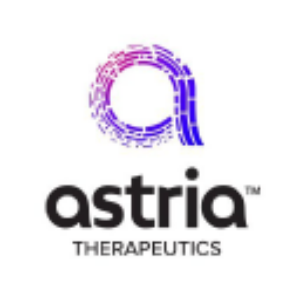Astria Therapeutics Presents New Preclinical Data Showing the Differentiated Profile of STAR-0215, in Development to Treat Hereditary Angioedema
-- STAR-0215 Demonstrates High Potency to Inhibit Plasma Kallikrein Preclinically --
-- Preclinical Data Show STAR-0215’s Extended Plasma Half-Life, Predicting Long Duration of Action --
“These preclinical data support the potential of STAR-0215 to provide long-acting, effective prevention of HAE attacks, with dosing once every three months or longer,” said
HAE is a rare genetic disorder characterized by severe, recurrent, unpredictable, painful, and sometimes life-threatening swelling in the face, limbs, abdomen, and airway. Plasma kallikrein binding affinity and plasma half-life are key drivers of efficacy for the prevention of HAE attacks. The data presented today show that STAR-0215 binds to plasma kallikrein in vitro with high affinity, about ten-fold more potently than lanadelumab, a monoclonal antibody plasma kallikrein inhibitor. In addition, in competition binding experiments, STAR-0215 was shown to bind to a different site on plasma kallikrein than lanadelumab. YTE modifications in STAR-0215 are designed to enable a longer duration of action. In cynomolgus monkeys dosed with STAR-0215, the enhanced FcRn binding enabled by the YTE modifications translated to a more than three-fold increase in plasma half-life to about 34 days with STAR-0215 compared to an antibody without the YTE modifications. The plasma half-life of STAR-0215 in cynomolgus monkeys was also more than three-fold longer than that of lanadelumab, supporting the potential for less frequent dosing.
STAR-0215’s potency was also tested using a physiologically relevant assay. STAR-0215 potently inhibited the release of bradykinin from high molecular weight kininogen, with an IC90 about 10-fold more potent than the IC90 achieved by lanadelumab in the same assay. IC90 corresponds to the concentration required to inhibit
STAR-0215 is in preclinical development to treat HAE, and is a monoclonal antibody inhibitor of plasma kallikrein, designed to provide long-acting, effective HAE attack prevention. The company’s goal is to provide the most patient-friendly preventative treatment option for people living with HAE. The company expects to file an Investigational New Drug application for STAR-0215 in mid-2022 and plans to initiate a Phase 1 clinical trial with initial results anticipated by year end 2022.
About
Forward Looking Statements:
This press release contains forward-looking statements within the meaning of applicable securities laws and regulations including, but not limited to, statements regarding: the Company’s expectations regarding the timing for the filing of an IND and commencement of a Phase 1 clinical trial for STAR-0215, the timing of the initial results from such trial; the potential attributes and differentiated profile of STAR-0215 as a potential treatment for HAE; and the Company’s mission to bring life changing therapies to patients and families affected by rare and niche allergic and immunological diseases. The use of words such as, but not limited to, “anticipate,” “believe,” “continue,” “could,” “estimate,” “expect,” “goals,” “intend,” “may,” “might,” “plan,” “potential,” “predict,” “project,” “should,” “target,” “will,” or “would” and similar words expressions are intended to identify forward-looking statements. Forward-looking statements are neither historical facts nor assurances of future performance. Instead, they are based on the Company’s current beliefs, expectations and assumptions regarding the future of its business, future plans and strategies, future financial performance, results of pre-clinical and clinical results of the Company’s product candidates and other future conditions. Actual results may differ materially from those indicated by such forward-looking statements as a result of various important factors, including risks and uncertainties: changes in applicable laws or regulations; the possibility that the Company may be adversely affected by other economic, business, and/or competitive factors, including the COVID-19 pandemic; risks inherent in pharmaceutical research and development, such as: adverse results in our drug discovery, preclinical and clinical development activities, the risk that the results of pre-clinical studies may not be replicated in clinical studies, the Company’s ability to enroll patients in our clinical trials, and the risk that any of the Company’s clinical trials may not commence, continue or be completed on time, or at all; decisions made by, or feedback received from, the
View source version on businesswire.com: https://www.businesswire.com/news/home/20211105005015/en/
Investor relations:
investors@astriatx.com
Media:
media@astriatx.com
Source:







